Removable Bike Racks
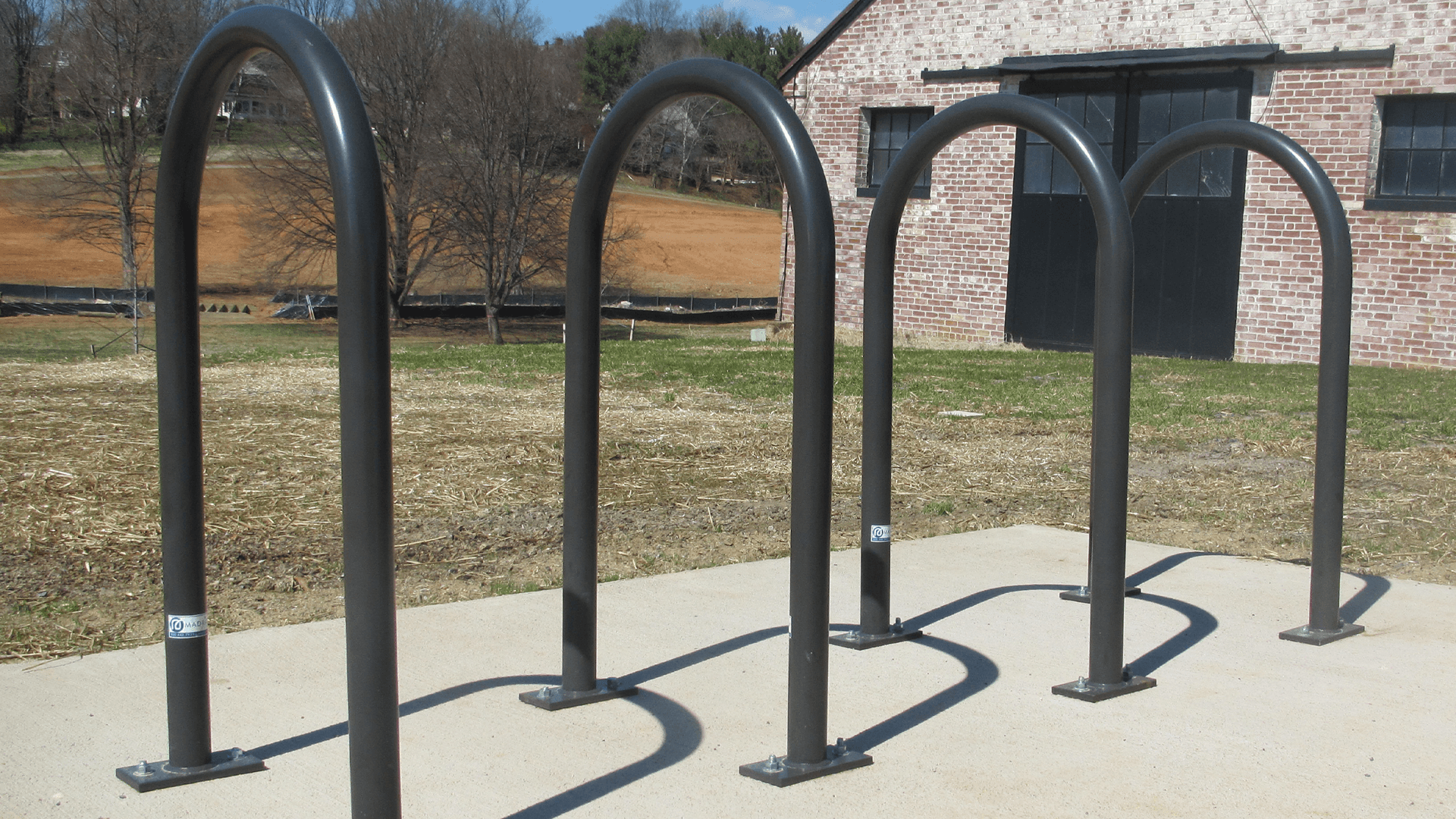
Often, once a bike rack is installed, it becomes a permanent fixture, and the only way to remove it is to break up the surface it is installed in.
There are options for removable bike racks, however, that can easily be removed or replaced when needed, but still offer the same standard of bicycle security as in-ground racks.
Why Remove a Bike Rack?
In certain situations a removable bike rack might make more sense than one that is permanently mounted. Some examples include:
- Cleaning or re-finishing the surface, which potentially could involve chemicals that would damage the steel or finish of the bike rack
- Storing bike racks indoors during the winter to avoid exposure to salt
- Permanently moving the bike parking area to a different location without having to tear out the existing space
- Offering temporary bike racks at events
A removable bike rack gives you more flexibility to access and re-use your space as needed. Thankfully, there are a few different ways you can install a removable bike rack, so you can choose what best fits your needs.
Surface Mount Bike Rack with Drop-in Anchors
One of the most effective methods of having a removable bike rack, that is viable with virtually all standard bike parking racks, is to use drop-in anchor hardware with a surface-mount bike rack.
A drop-in anchor involves an anchor element that is placed into a hole that has been drilled into concrete. A separate bolt is then threaded into the anchor, which expands and sets the anchor in place. A nut is then used to tighten the flanges of the bike rack to the surface.
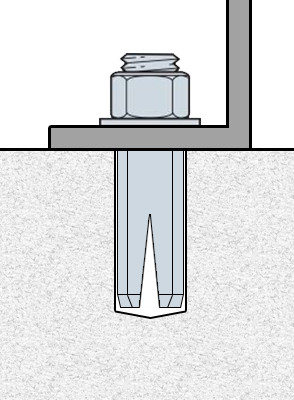
When you want to remove the bike rack, simply loosen the nut, and remove the bike rack and bolt. The anchor will remain in the ground, but will be below the surface. An appropriately sized bolt can be re-inserted and screwed in to fill the hole in the anchor if needed.
If selecting this bike rack installation method, we strongly encourage the use of tamper-proof nuts. These require a special tool to unscrew the nut from the bolt and offer greater security. This style of nut is much more of a deterrent against would-be thieves who could easily remove regular bolts with standard tools.
Freestanding Bike Racks
A freestanding bike rack offers a secure way to lock a bicycle to a rack without the need for installation. Generally, these are used when you want to create a bike parking area on a surface that a bike rack can't be effectively mounted to, such as grass, dirt, crushed limestone, or asphalt.
But because the rack isn't mounted to the surface, it can be moved whenever needed.
These racks are typically designed in such a way that the overall size and weight of the racks makes them too heavy for thieves to easily haul off.
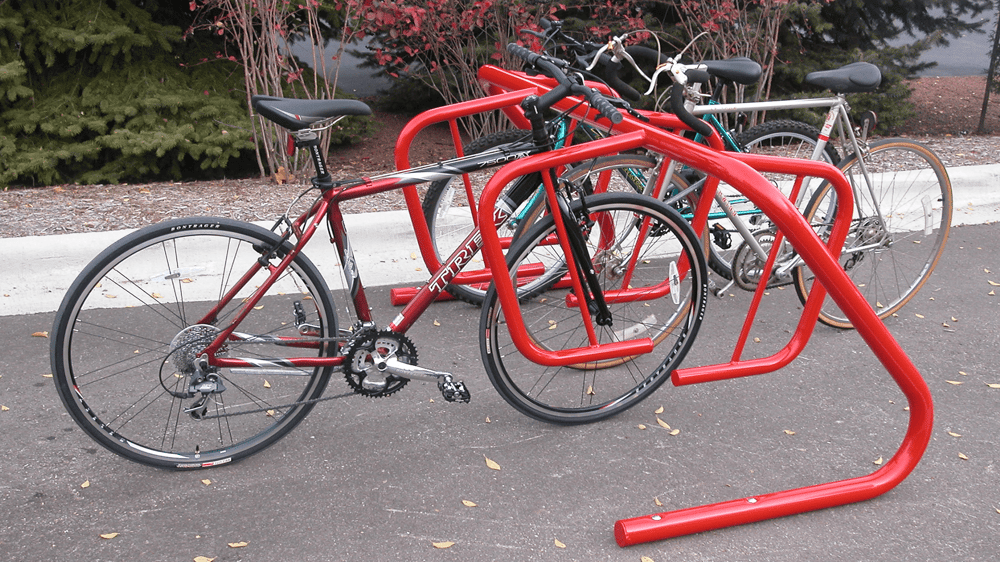
The Spartan Rack from Madrax is an example of a freestanding bike rack that offers secure loops for locking bicycles, but can also be moved if needed.
Bike Racks on Rails
Like freestanding bike racks, bike racks on rails don't require the mounting of racks to a surface. Instead, the rack elements are mounted to a c channel rail, creating an effective enclosure to lock a bicycle to.
Bike racks on rails are also easily moved, but large enough to deter thieves from stealing the entire structure.
There are also a variety of styles of bike racks on rails to choose from. Standard racks, like U racks, can be mounted to rails. But so can more diverse options like the Shark or Sentry Racks.
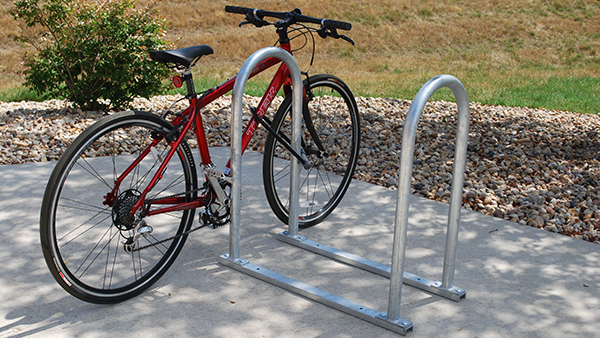 |
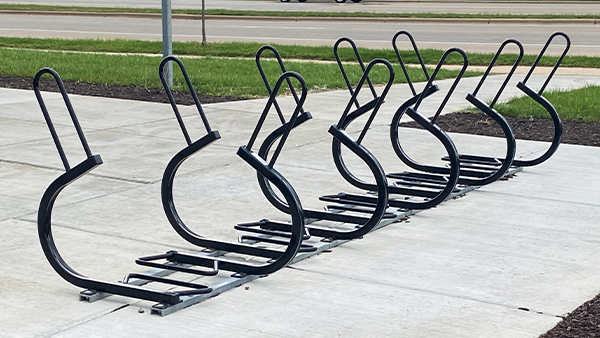 |
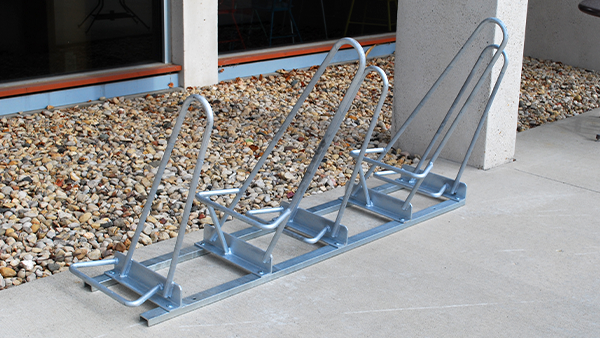 |
L-R: U Bike Rack on Rails, Sentry Double-sided Bike Rack, Shark-up Bike Rack.
The most secure bike rack is one installed into concrete. But this may not be needed in all instances. Choose from the options above to create secure bike parking areas, but also have the flexibility to remove the bike racks if needed.
Would you like more help addressing your specific bike parking challenges? Contact Madrax today. Our sales reps are happy to help you find the perfect solution that will best fit your needs.
Related Resources
- [Article] Dimensions for Spacing Bike Racks
- [Free Resource] Bike Parking Guide
- [Article] Bike Rack Installation Methods

